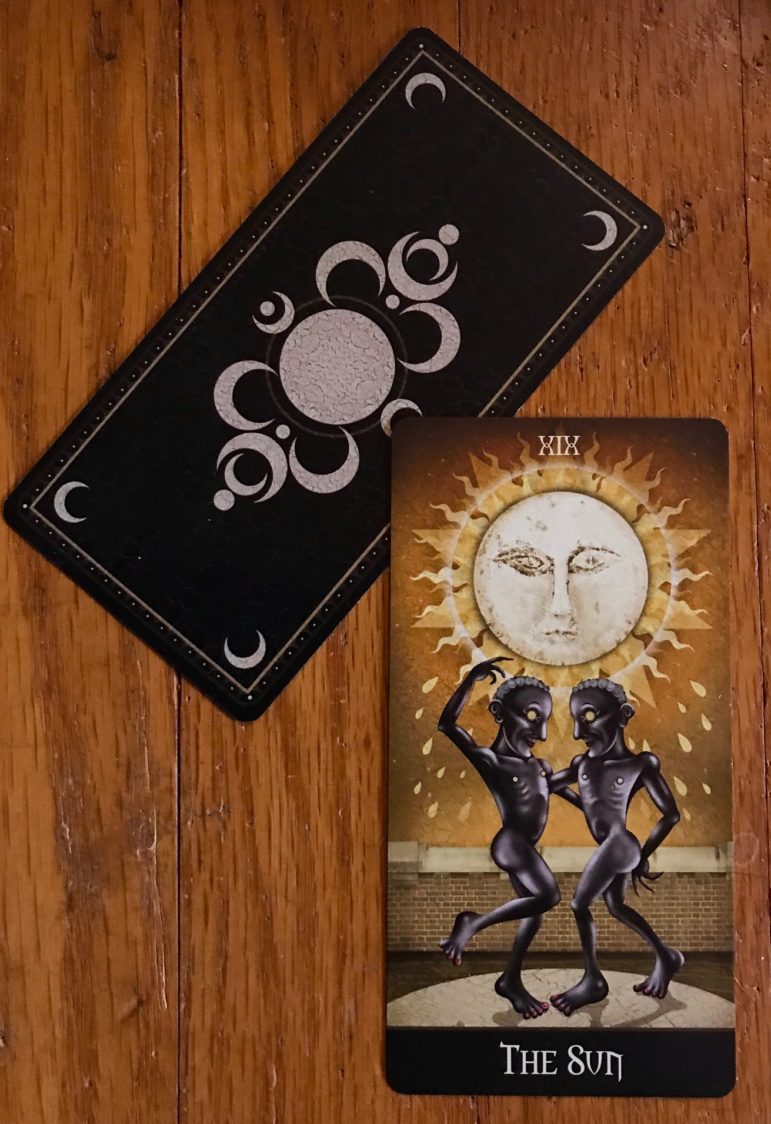
pixabay
TWH – Earth Day was first celebrated on April 22, 1970, making this year its 50th anniversary, with this year’s theme being climate action.
20 million Americans took to the streets on the very first Earth Day and resulted in the U.S. enacting a number of environmental protections like the Endangered Species and the Clean Air, Clean Water Acts, as well as creating the Environmental Protection Agency (EPA) in July of 1970.
The U.S. taking action to protect the environment spurred other nations around the world to follow suit and pass similar laws. The historic United Nations Paris Accord Agreement on Climate Change was signed on Earth Day in 2016.
Selena Fox, the founder of Circle Sanctuary, has been involved in helping celebrate Earth Day since its inception in 1970 when she helped to organized the first Earth Day celebration while attending the College of William and Mary in Virginia.
This year Circle Sanctuary held its annual Earth Day celebration virtually and online this past Saturday. They have also created a new resource page on their website that offers links for past celebrations, prayers to use, and other information on activities and activism opportunities for preserving and honoring the environment.
Many other local celebrations have either been taken online or canceled this year due to quarantine and stay-at-home orders in place in many states and municipalities.
* * *

Image: Wing-Chi Poon, CC lic. Wikipedia Commons
ALBUQUERQUE, N.M. – Native Americans are being heavily impacted by COVID-19 infections. Over a third of all cases being reported in New Mexico are tribal members who make up only 10% of the population of the state.
The Navajo Nation, which spans three US states, is experiencing an outbreak that began several weeks ago and as of Saturday had 1,197 confirmed cases with 44 deaths.
Tribal healthcare nationwide is underfunded, which limits its ability to respond to severe illnesses that require isolation and specialized equipment like ventilators. Many places offering health care that are operated by Indian Health Services are set up as clinics and are not equipped to handle intensive care.
$10 billion in federal funding that was allocated by Congress for Native American tribes instead of going directly to those tribes, had to be applied for through the Centers for Disease Control and Prevention. This slowed down the ability of the tribes to obtain proper protective gear and testing equipment slowing their ability to prepare for the pandemic.
The Federal Emergency Management Agency (FEMA), working with the Arizona National Guard, assembled a 50-bed field hospital near the small town of Chinle; but remote rural locations make the process challenging.
In other parts of the country like South Dakota, Pine Ridge Hospital which serves over 50,000 Oglala Sioux tribal members, as reported by the Washington Post on April 4, had only 24 coronavirus test kits, half a dozen ventilators, and only four beds slated for tribal patients who needed to be quarantined.
Multiple generations of the same family also live under one roof making density an issue. However, separating elders in order to protect them from the spread of the virus violates cultural and societal norms of many tribes. Those cultural norms focus on fostering and reinforcing strong ties with elders who pass on cultural values and are often the most fluent in their indigenous language.
Dozens of powwows across North America have been canceled. Native dancers have been posting videos of themselves dancing in isolation to various social media platforms, and groups like the newly created Facebook group, Quarantine Dance Specials 2020.
In other news:
- As glaciers continue to be impacted by global warming and climate change, new archaeological finds are being revealed. According to a new study published in Cambridge University’s journal Antiquity, exploration of a mountain pass in Lendbreen, Norway and the artifacts discovered offer better understanding of travel through the mountainous areas of that region in the period of 300 to 1500 C.E. Researchers found a veritable treasure trove of items throughout the pass, everything from cairns to everyday tools like walking sticks, and horseshoes, and even textiles like rags, mittens, shoes, and a tunic. Researchers first discovered the pass in 2011, and the study includes work done through 2015. Since then further melting has revealed even more artifacts. Additional work and research on the area expected to be released in the future.
- TWH correspondent and contributor, Liz Williams was interviewed last week by The Sunday Post on the topic of Paganism, new and old. Williams provided no-nonsense answers to basic questions about what Paganism is, how it is practiced today, and the relevance of sites like Stonehenge to modern Pagans. Williams is the author of Miracles Of Our Own Making: A History Of Paganism published by Reaktion Books, as well as a variety of science fiction/fantasy titles.
- French media company OSC has released a documentary, Witches in Hollywood. The documentary, released on April 12, was produced by filmmaker Sophie Peyrard focuses on the history of the Witch in film and how they have been portrayed has changed over time. Peyrard also draws a connection between the evolution of women’s rights and feminism and Witchcraft.
In “witch-hunt” news:
Editorial Note: TWH places the terms “witchcraft” and “witch” in quotes when it applies to persons who are not Pagan and do not practices some form of recognizable Witchcraft. Victims of “witch-hunts” are most often the elderly, women, and children, and frequently accused so others can gain control of perceived wealth or property, and often driven by superstitions and mob mentality within villages.
- Leo Igwe has long stood as an advocate for stopping “witch-hunts” in Nigeria and other countries of the African continent. In January he formed the Advocacy for Alleged Witches (AFAW) to fight the persecution of people accused of being “witches” and practicing “witchcraft.” Recently he published an article calling on activists, educators, and government officials to educate the population and completely eradicate “witch-hunts” by 2030, by ending the superstitious beliefs that feed such violence. He also spoke out about how the current health crisis of COVID-19 is contributing to the prevalence currently of “witch-hunts.”
- Women accused of practicing “witchcraft” or being “witches” are finding a place of safety with the Missionary Sisters of the Poorest of the Poor in Ghana. The sisters who run the refuge provide sanctuary for hundreds of women who have been forced out of their villages because villagers mistakenly believe they are responsible for misfortunes that have befallen the community. The sisters working with local authorities often intercept villagers who have beaten and restrained women before they can be further harmed and bring them to camp they have established as a safe place. The majority of women have children and widowed, so there is no one to defend them from accusers. The sisters also provide meals and medical care for those who are homeless and others who need help.
- In Nimba, 25 children who had been accused of being “witches” and abandoned by their “guardians” were reunited with their families. The Ministry of Gender, Children and Social Protection has originally rescued the children from the Fire for Fire Deliverance Church where they were being held in deplorable conditions under the guise of requiring “spiritual cleansing” because they were believed to be “witches.” No charges were ever filed against the church or the persons who took the children to the church, so after months of tracking down their families, they were reunited with them. This despite that under Liberian law, “a parent, guardian, or other person supervising the welfare of a child under 18 commits a misdemeanor of the first degree if he knowingly endangers the child’s welfare by violating a legal duty of care, protection or support.” In most cases, the children were taken to the church by either distant family members or someone other than their immediate family members. The social workers who worked to return the children said they made sure each child was comfortable in returning and remaining with their family members before leaving them reunited with their families.
Tarot of the week by Star Bustamonte
 Deck: Deviant Moon Tarot by Patrick Valenza, published by U.S. Games Systems, Inc.
Deck: Deviant Moon Tarot by Patrick Valenza, published by U.S. Games Systems, Inc.
Card: The Sun, Major arcana (XIX)
This week may offer up opportunities to connect with friends, and even provide some new reasons to celebrate. Conversely, there is also a focus on separation, loneliness, and already stressed relationship becoming more unstable.
Words of advice: Be kind to yourself and others.
Decks generously provided by Asheville Raven & Crone.
The Wild Hunt is not responsible for links to external content.
To join a conversation on this post:
Visit our The Wild Hunt subreddit! Point your favorite browser to https://www.reddit.com/r/The_Wild_Hunt_News/, then click “JOIN”. Make sure to click the bell, too, to be notified of new articles posted to our subreddit.